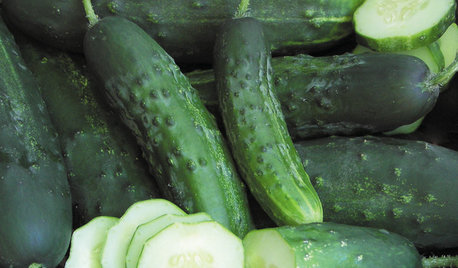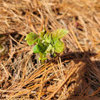What do cucumber beetles hate most?
raisemybeds
17 years ago
Related Stories

SUMMER FRUITS AND VEGETABLESSummer Crops: How to Grow Cucumbers
Pick a peck for pickles or opt for fewer and raw — no matter how you slice them, cucumbers are great for summer gardens small to large
Full Story
LIFESimple Pleasures: 25 Ways to Make the Most of a Staycation
Give the daily grind the day off by hiding your work stuff, treating yourself and enjoying the outdoors
Full Story
GARDENING GUIDESGarden Myths to Debunk as You Dig This Fall and Rest Over Winter
Termites hate wood mulch, don’t amend soil for trees, avoid gravel in planters — and more nuggets of garden wisdom
Full Story
EDIBLE GARDENSGarden BFFs? Why Your Vegetables Are Begging for Companion Plants
Foster friendships among plants for protection from pests, pollination support and color camaraderie
Full Story
FARM YOUR YARDHow to Build a Raised Bed for Your Veggies and Plants
Whether you’re farming your parking strip or beautifying your backyard, a planting box you make yourself can come in mighty handy
Full Story
KITCHEN DESIGNPro Chefs Dish on Kitchens: Paul Kahan Shows His Urban Sanctuary
Peek inside Kahan's newly redone home kitchen and learn what he considers most important for a cooking space
Full Story
GARDENING GUIDESWe Bust 4 More Native Plant Myths
Have you been taken in by these fallacies about gardening with native plants?
Full Story
EDIBLE GARDENSHow to Grow Your Own Sweet Summer Crops
This guide will help any gardener get started on growing the freshest warm-season veggies and berries for summer
Full Story
FARM YOUR YARDHow to Grow Vegetables in Containers
Get glorious vegetables and fruits on your patio with a pro’s guidance — including his personal recipe for potting mix
Full Story
KITCHEN DESIGN24 Dramatic Kitchen Makeovers
From drab, dreary or just plain outdated to modernized marvels, these kitchens were transformed at the hands of resourceful Houzzers
Full StorySponsored
More Discussions








Violet_Z6
raisemybedsOriginal Author
Related Professionals
Norfolk Landscape Architects & Landscape Designers · Marina Landscape Architects & Landscape Designers · Arlington Landscape Contractors · Surprise Landscape Contractors · Bridgeport Landscape Contractors · Brookfield Landscape Contractors · Columbine Landscape Contractors · Commack Landscape Contractors · Edwardsville Landscape Contractors · El Sobrante Landscape Contractors · Hannibal Landscape Contractors · Tavares Landscape Contractors · Goldenrod Landscape Contractors · Skokie Driveway Installation & Maintenance · Mount Vernon Driveway Installation & Maintenancejustaguy2
anney
justaguy2
anney
justaguy2
Scott F Smith
anney
Scott F Smith
justaguy2
anney
Scott F Smith
nygardener
raisemybedsOriginal Author
reba_grows
nygardener